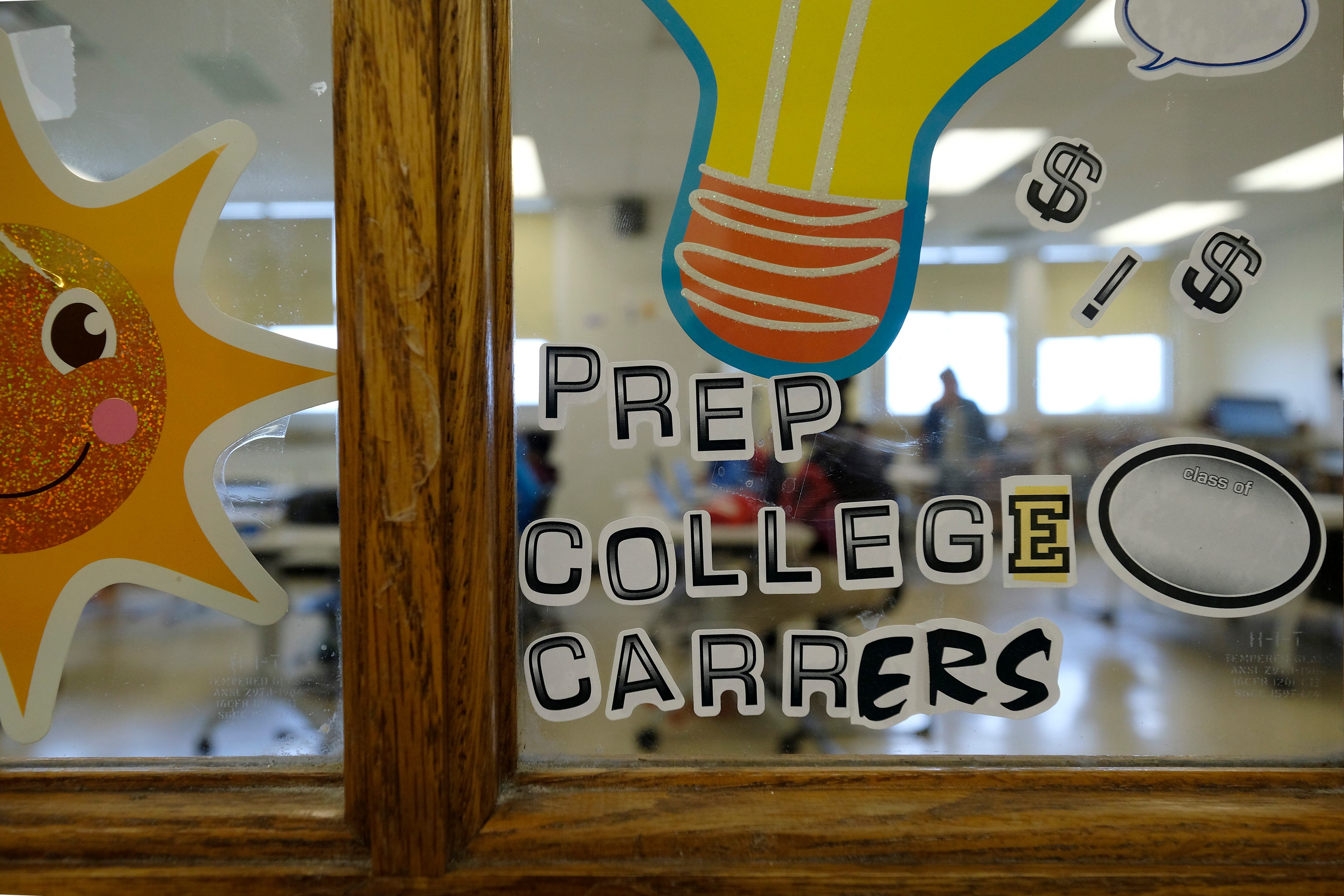Sign up for Chalkbeat Indiana’s free daily newsletter to keep up with Indianapolis Public Schools, Marion County’s township districts, and statewide education news.
It’s the first school year that Indiana students are required to fill out the Free Application for Federal Student Aid, known as FAFSA. But they still don’t have access to the form.
The FAFSA is typically released in October. But this year, its release has been delayed as the federal government works on a new version that’s supposed to be easier and quicker to fill out. It’s now expected to be out by the end of the month.
All that change means it’s even more important for resources to reach every student individually, school leaders said.
The FAFSA is how students are considered for federal financial aid such as grants, loans and scholarships as well as some aid from states and individual colleges. Students can also access funds for a Next Level Jobs Workforce Ready Grant for a short- or long-term credential by filling out the form.
The new statewide requirement, which has some exceptions, is part of an effort by state leaders to boost Indiana’s college-going rate, which stood at about 53% for the Class of 2021, the latest data available. That’s roughly the same percentage as for the Class of 2020, although it declined for several years before that.
Filling out the FAFSA is considered an indicator of college-going, and nearly 48% of students in Indiana’s high school Class of 2023 completed the form, per a state dashboard. But the FAFSA delay could create a time crunch; of those students who completed the FAFSA, roughly 60% filled out the form by Dec. 31.
What families need to prepare for the FAFSA
One big change is when students and parents create their Federal Student Aid ID, which serves as a digital signature students need for the FAFSA
As part of creating the ID, they submit personal information to be verified, and the ID can take one to three days, said Bill Wozniak, vice president of communications and student services for INvestEd, which provides free FAFSA help in-person and via phone.
In the past, students and parents could create their FSA ID before sitting down to fill out the FAFSA or at the same time, but the latter is no longer an option, Wozniak said. So families need to have the ID ready before they start the form.
“It really launches the whole process,” said Rebecca Daugherty-Saunders, director of college and career readiness for the Metropolitan School District of Wayne Township.
School leaders and others are telling students to create their FSA IDs now. Otherwise, for example, families might come to a FAFSA event in the spring expecting to complete the FAFSA there with experts to help them, but won’t be able to because they don’t have an ID ready to go.
How sports and free dinners help schools boost FAFSA completion
In years past, Wozniak said INvestEd would hold roughly half of its FAFSA events before the new year, in part because there’s typically a group of students who wanted to fill out the form around the time when college applications are due.
Plus, College Goal Sunday, a free event to help families fill out the FAFSA at locations across the state, is typically in October and in February. But this school year, it’s only on Feb. 25, 2024, said Wozniak, who serves as the event’s co-chairperson.
Still, INvestED has more than 900 events scheduled this year at high schools across the state, including ones this semester about the FSA ID and general information.
And districts including Warren and Wayne townships received the College Matters grant to increase college enrollment in Marion County; they are using it to help students fill out the FAFSA.
Both Ben Davis and Warren Central have added experts and support staff from universities and community groups to answer questions and work with students and families on the FAFSA. District leaders said they are looking for ways to make it as easy as possible for families.
At Warren, that means having people available to help before and during the school day at the district’s community resource center, in addition to the evening sessions for filling out the FAFSA.
It also means ensuring there is FAFSA information at events families attend, such as athletic competitions, said Laura Butgereit, coordinator for college and career readiness, school counseling, and family engagement for the Metropolitan School District of Warren Township.
At Ben Davis, the Indianapolis Urban League is providing hot meals for families during the FAFSA nights. That makes it easier for families to attend, Daugherty-Saunders said: “We’re taking time away from families outside of school. It’s their dinner time.”
Reaching all students can be difficult in a high school as big as Ben Davis, but it’s crucial, Daugherty-Saunders said. She added that teachers and counselors both work to reach seniors about their postsecondary plans.
Butgereit agreed that reaching each student is crucial to the new FAFSA mandate’s success.
“It’s going to come down to our counselors [and] support people working through all the seniors,” she said.
MJ Slaby oversees Chalkbeat Indiana’s coverage as bureau chief. She also covers access to higher education and Warren Township Schools. Contact MJ at mslaby@chalkbeat.org.






